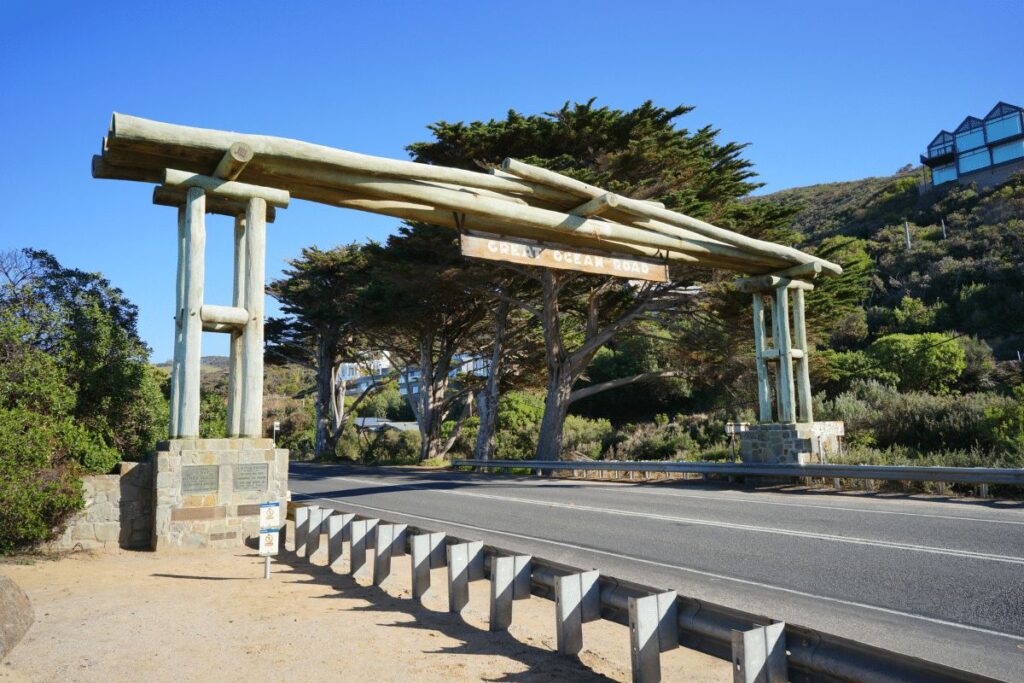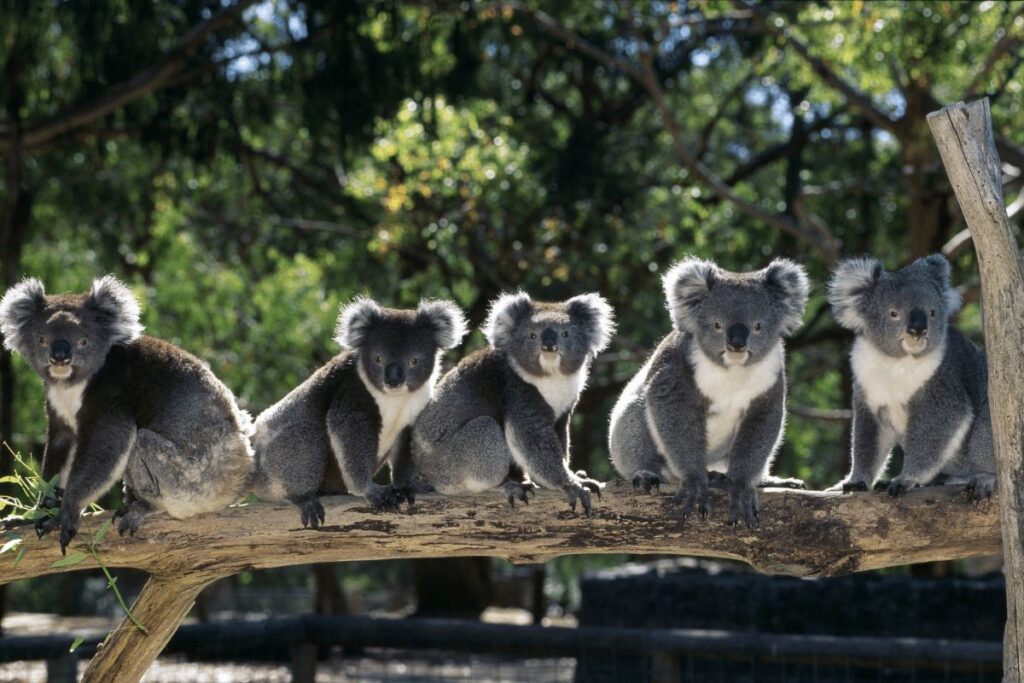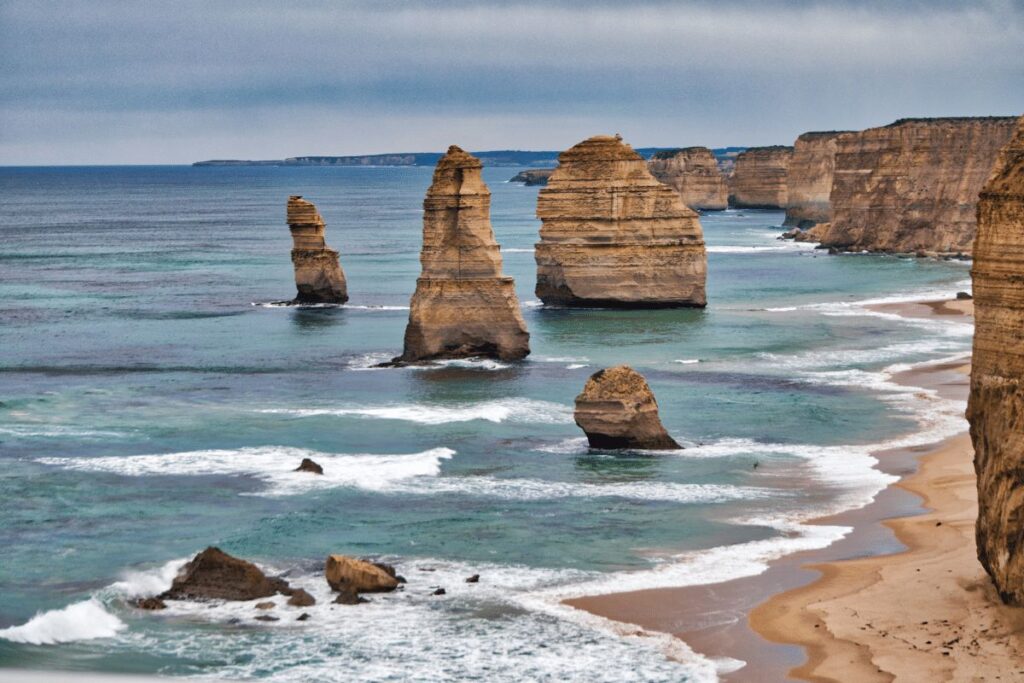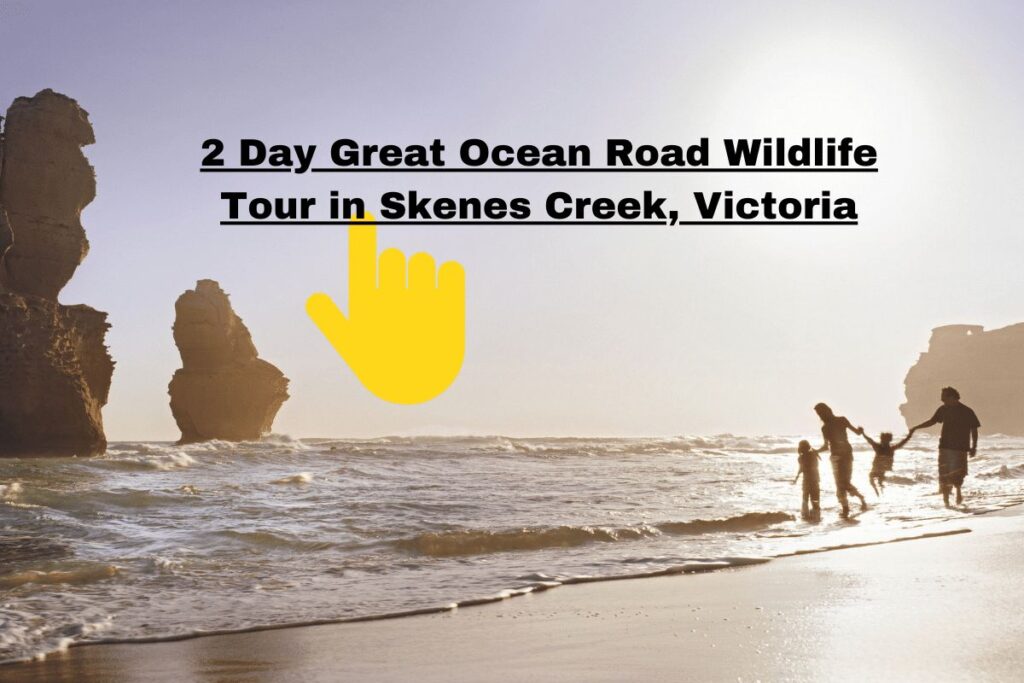Explore our adventures in Great Otway National Park and Great Ocean Road, with tips and must-sees!
Strap in, fellow adventurers, because you’re about to ride shotgun on our epic escapade through the untamed beauty of Great Otway National Park and along the thrilling twists of the Great Ocean Road!
Imagine a place where every turn is a postcard scene and every moment spent is a memory etched in time.
We’ll let you in on the must-sees, from towering trees that have stood the test of time to the diverse cast of wildlife characters, some of which you can’t find anywhere else in the world.
Get the inside scoop on the trails that will lead you to waterfalls so magical, you’d think they’ve been plucked straight out of a fantasy novel.
Need tips for making the most out of your visit? We’ve got those, too. Plus, we’ll answer all those burning questions about why this slice of Australia is unlike any other.
So, pack your enthusiasm along with a good pair of boots, because this is not your average walk in the park—it’s a leap into an adventure you won’t forget!
History of the Great Otway National Park
Great Otway National Park, established in 2004, is a sprawling 103,185-hectare park located in Victoria, Australia. The park is a unique convergence of lush rainforests, rugged coastlines, and tranquil waterfalls, offering visitors a diverse range of landscapes and experiences.
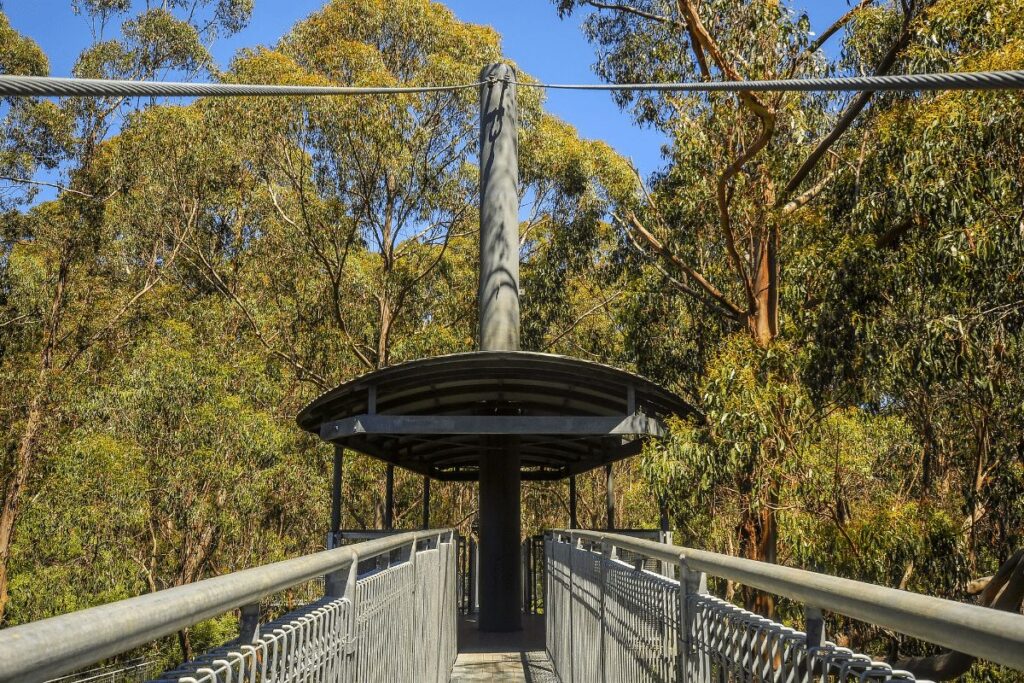
The area was originally inhabited by the Gadubanud people, who lived along the coast and hinterland for thousands of years. European settlement began in the mid-1800s, primarily for timber harvesting and agriculture. T
he region’s history is entwined with shipwrecks, lighthouses, and the construction of the Great Ocean Road, which commenced in 1919 to provide employment for returning World War I soldiers.
Trails in Great Otway National Park
Great Otway National Park offers an extensive network of walking tracks, catering to various fitness levels and interests. Some of the most popular trails include:
Triplet Falls Walk (2 km, 1-hour return)
This gentle walk meanders through the ancient rainforest, leading to the breathtaking Triplet Falls.
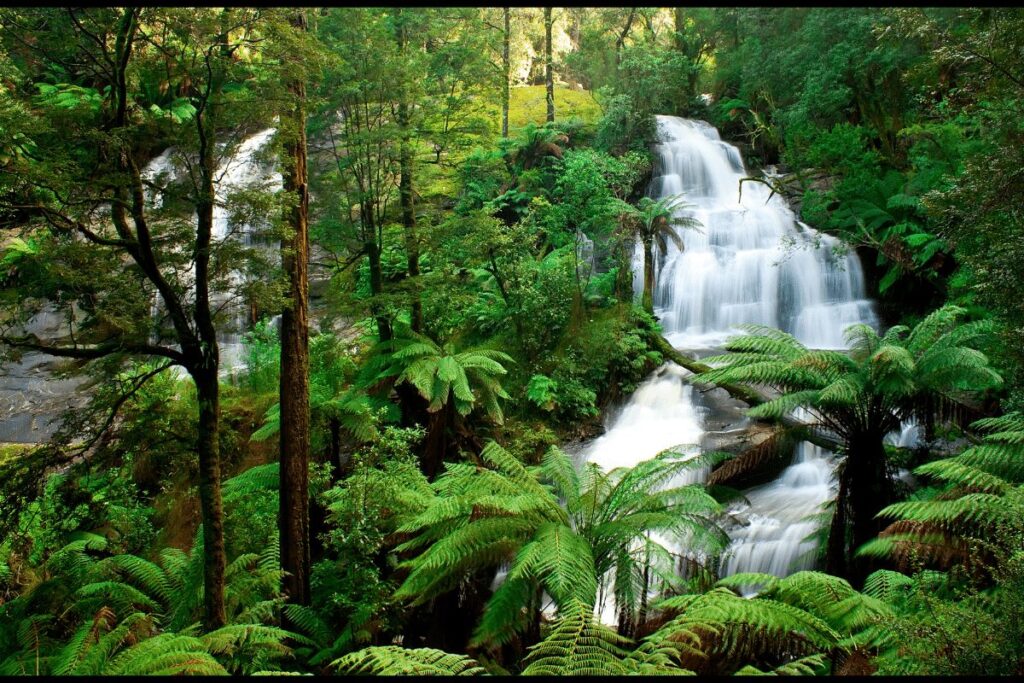
Admire the giant Mountain Ash trees and lush fern gullies along the way.
Maits Rest Rainforest Walk (0.8 km, 30-minute loop)
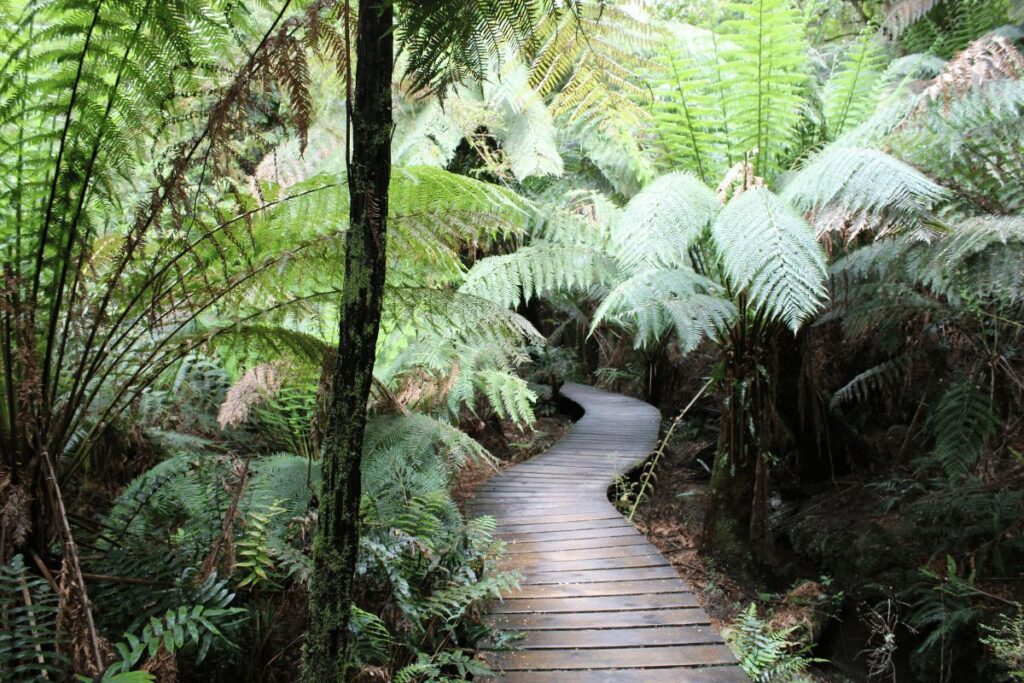
This easy-access boardwalk trail takes you through a beautiful cool temperate rainforest, showcasing the region’s diverse flora and ancient trees.
Cape Otway Lighthouse Walk (3.8 km, 2-hour return)
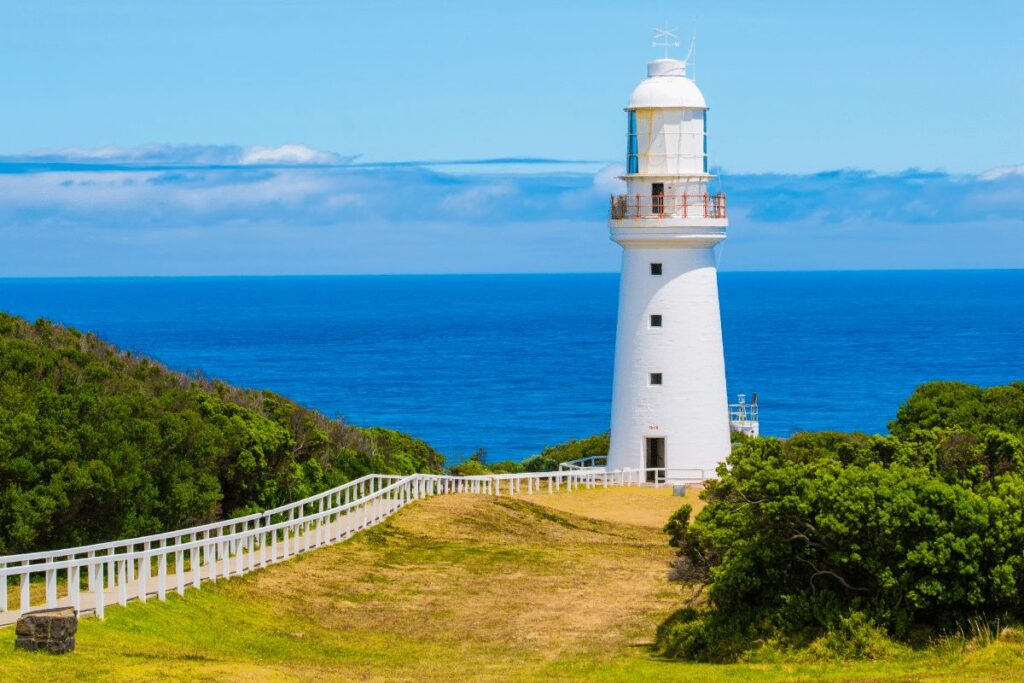
Starting from the Blanket Bay campground, this coastal walk leads you to the historic Cape Otway Lighthouse, offering stunning views of the coastline and the chance to spot whales during migration season.
Great Ocean Walk (104 km, 8-day hike)
This long-distance trail stretches from Apollo Bay to the 12 Apostles, traversing through a diverse range of landscapes, from sandy beaches to dense rainforests.
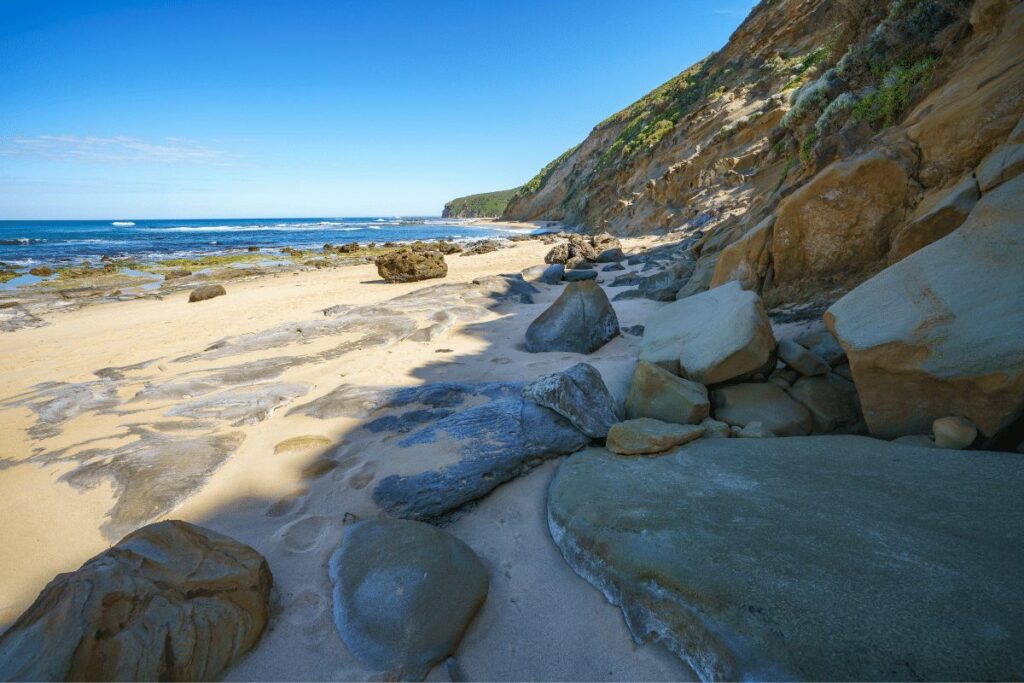
The trail can be broken down into smaller day hikes or enjoyed as a multi-day adventure.
Erskine Falls Walk (1.6 km, 40-minute return)
This short but steep walk takes you to one of the most famous waterfalls in the park, Erskine Falls.
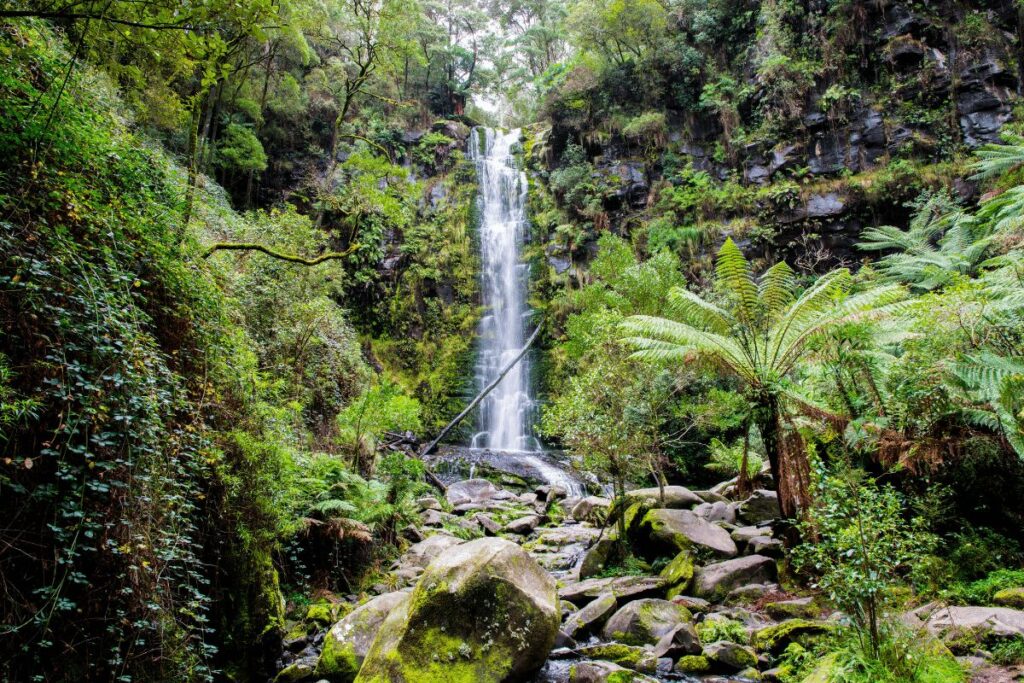
Descend the steps to reach the base of the falls, where you can marvel at the 30-meter-high cascade surrounded by lush ferns and mossy rocks.
Beauchamp Falls Walk (4 km, 1.5-hour return)
This moderate hike leads you through a magnificent cool temperate rainforest and along the banks of the Aire River to the impressive Beauchamp Falls.
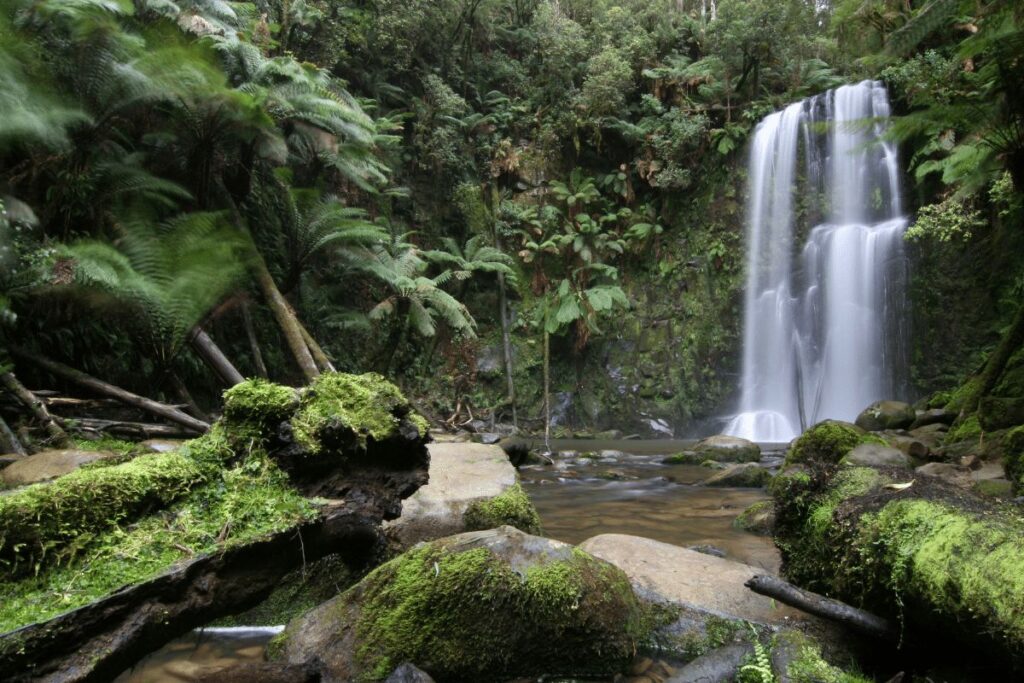
Be prepared for some steep sections and steps, but the stunning waterfall and surrounding scenery make the effort well worth it.
Hopetoun Falls Walk (1 km, 30-minute return)
This relatively easy walk takes you through a beautiful rainforest setting to a viewing platform overlooking the spectacular Hopetoun Falls.
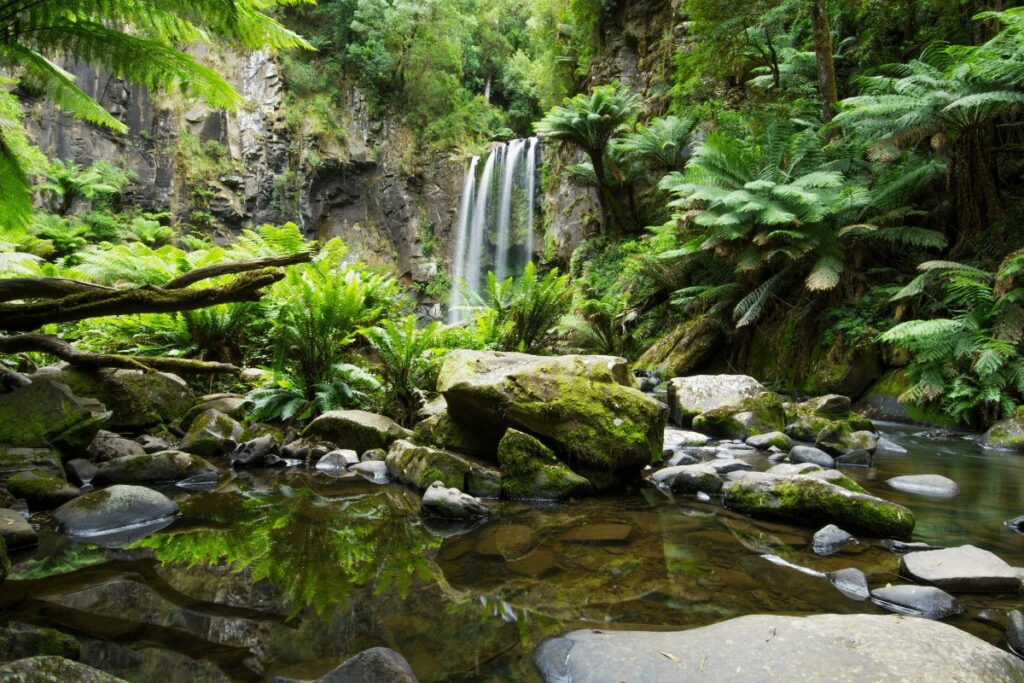
For a more immersive experience, you can descend the steps to the base of the falls and feel the refreshing spray of the cascading water.
Teddy’s Lookout Walk (1.4 km, 40-minute return)
Starting from the town of Lorne, this short walk leads you to Teddy’s Lookout, which offers panoramic views of the Great Ocean Road and the coastline.
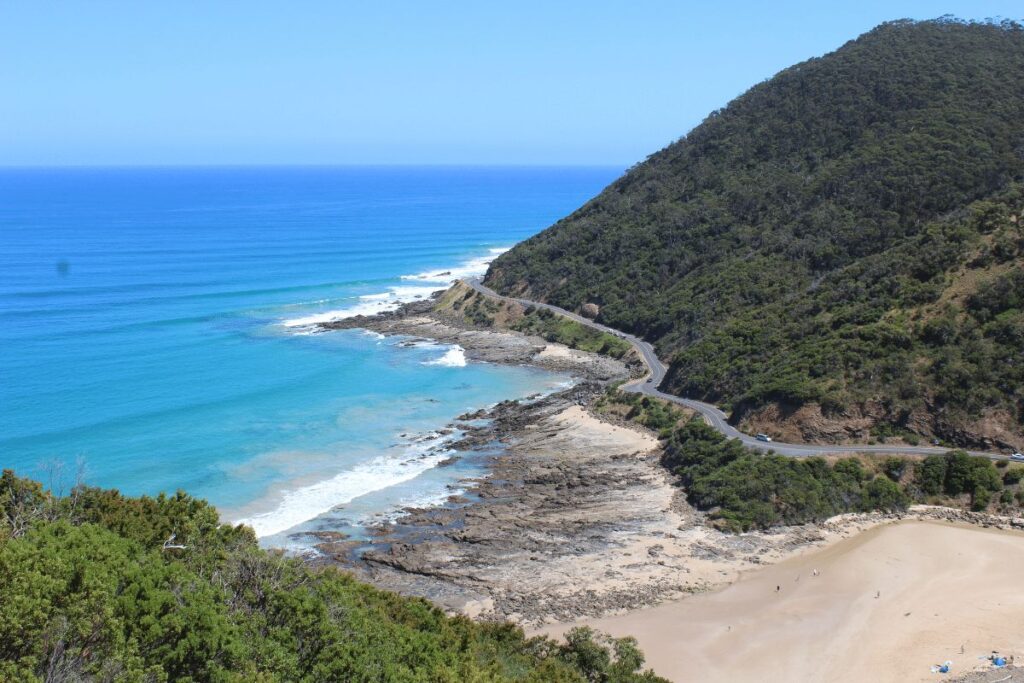
The lookout is particularly popular for watching the sunset and capturing stunning photographs.
Lake Elizabeth Walk (2 km, 1-hour return)
This gentle walk takes you through lush fern gullies and towering forests to the serene and picturesque Lake Elizabeth.
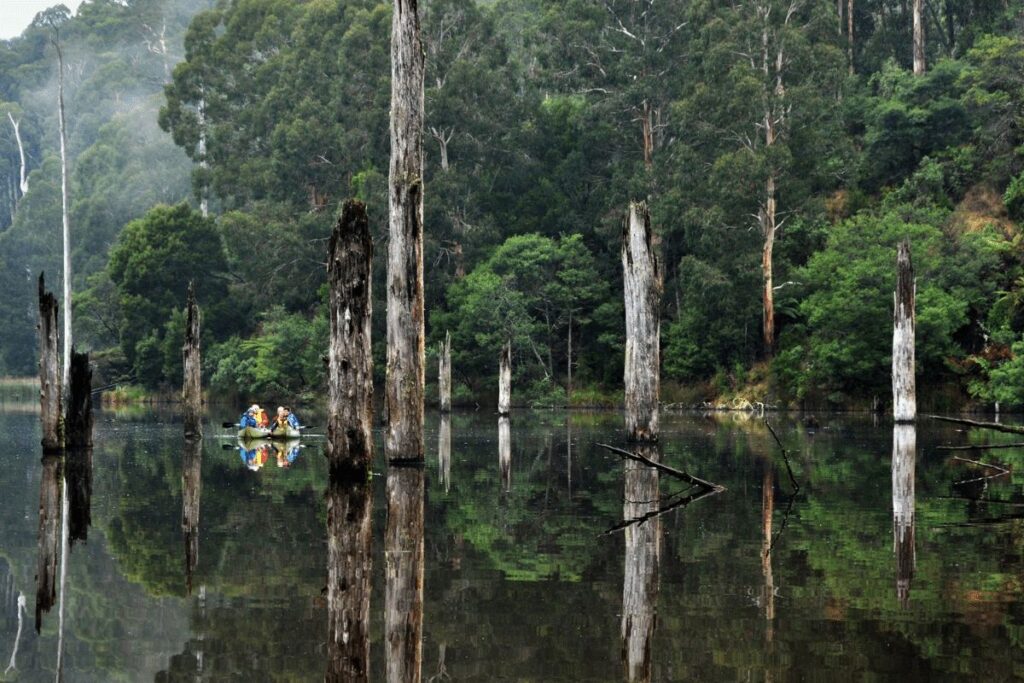
Keep an eye out for the resident platypus, as well as other wildlife that call this area home.
Marriners Falls Walk (3.4 km, 1.5-hour return)
This moderate hike takes you along the banks of the Barham River, passing through dense forest and fern gullies before reaching the hidden gem of Marriners Falls.
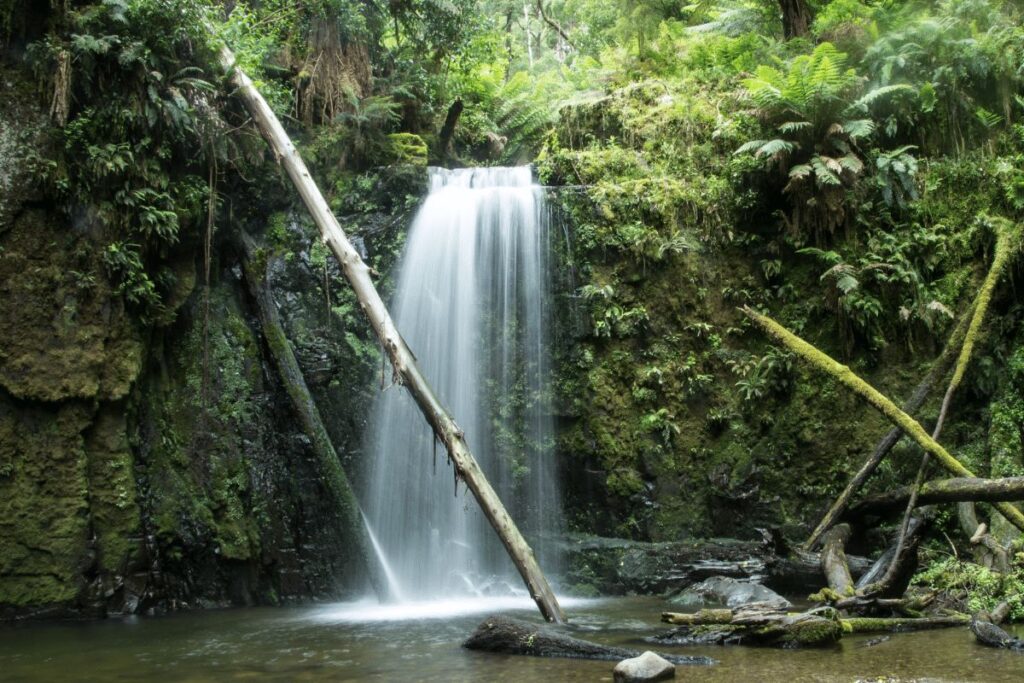
The track can be slippery, so take care and wear appropriate footwear.
Aire River Estuary Walk (4 km, 2-hour return)
This easy walk starts from the Aire River campground and takes you along the river to the estuary, where the river meets the ocean.
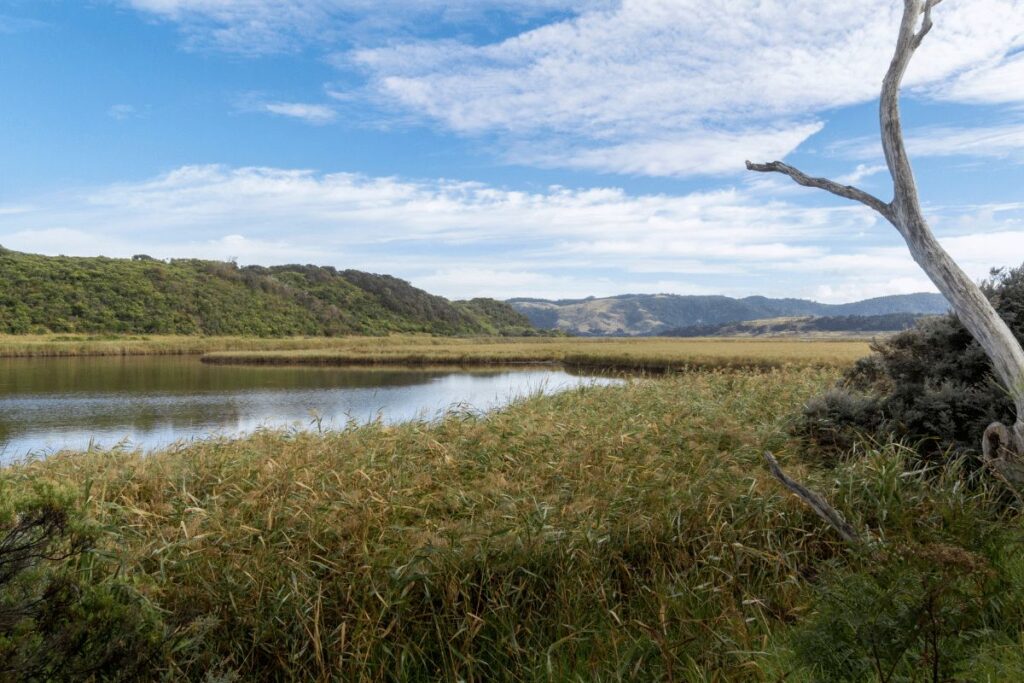
Enjoy the diverse landscapes, from wetlands to coastal dunes, and keep an eye out for a variety of birdlife, including migratory shorebirds.
Cumberland River Walk (7.2 km, 3-hour return)
This moderately challenging walk takes you along the Cumberland River, past cascades and rock pools, and up to a series of scenic lookouts.
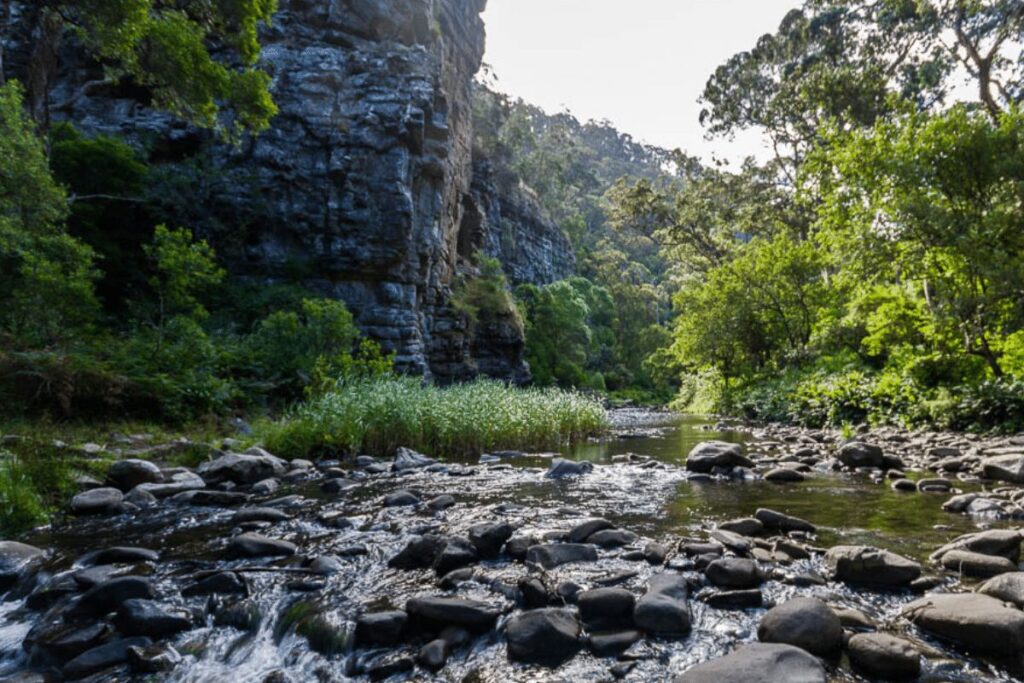
The trail offers a mix of coastal and river scenery, with the chance to spot wildlife and enjoy the park’s diverse flora.
These trails offer a fantastic way to explore the various landscapes and natural features of Great Otway National Park. Remember to wear appropriate footwear, carry sufficient water and snacks, and follow all signage and guidelines to ensure a safe and enjoyable experience.
Trees of the Great Otway National Park
The park boasts an array of plant species, including some of the tallest and oldest trees in the world.
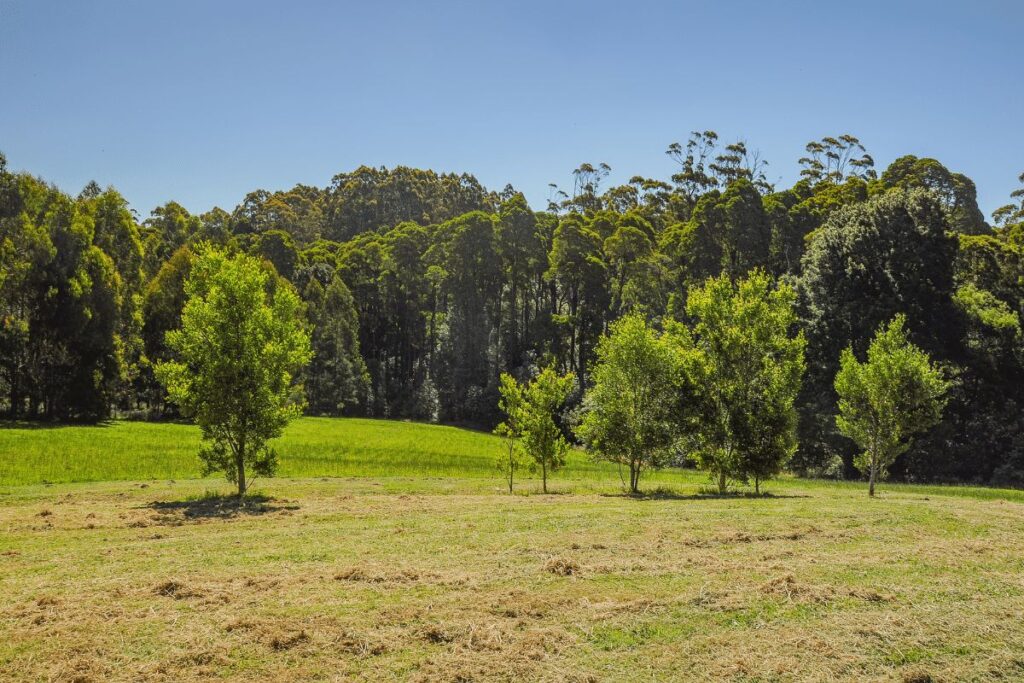
Among the most notable tree species are:
- Mountain Ash (Eucalyptus regnans)
The Mountain Ash is the world’s tallest flowering plant, reaching heights of up to 100 meters. These giants can live for over 400 years, and their presence is a testament to the ancient nature of the park’s forests.
- Myrtle Beech (Nothofagus cunninghamii)
The Myrtle Beech is a key component of the park’s cool temperate rainforests. This evergreen tree can reach up to 30 meters tall and has a distinctive dark brown, furrowed bark.
- Tree Ferns
The park is home to various tree fern species, including the Soft Tree Fern (Dicksonia antarctica) and the Rough Tree Fern (Cyathea australis). These prehistoric plants can grow up to 15 meters tall and create a unique, lush understory in the park’s rainforests.
Animals and Birds in the Great Otway National Park
Great Otway National Park is a haven for a diverse range of wildlife, including mammals, reptiles, amphibians, and a plethora of bird species. Some of the most notable animals and birds you may encounter during your visit are:
Koalas
One of Australia’s most iconic marsupials, koalas inhabit the eucalyptus forests throughout the park.
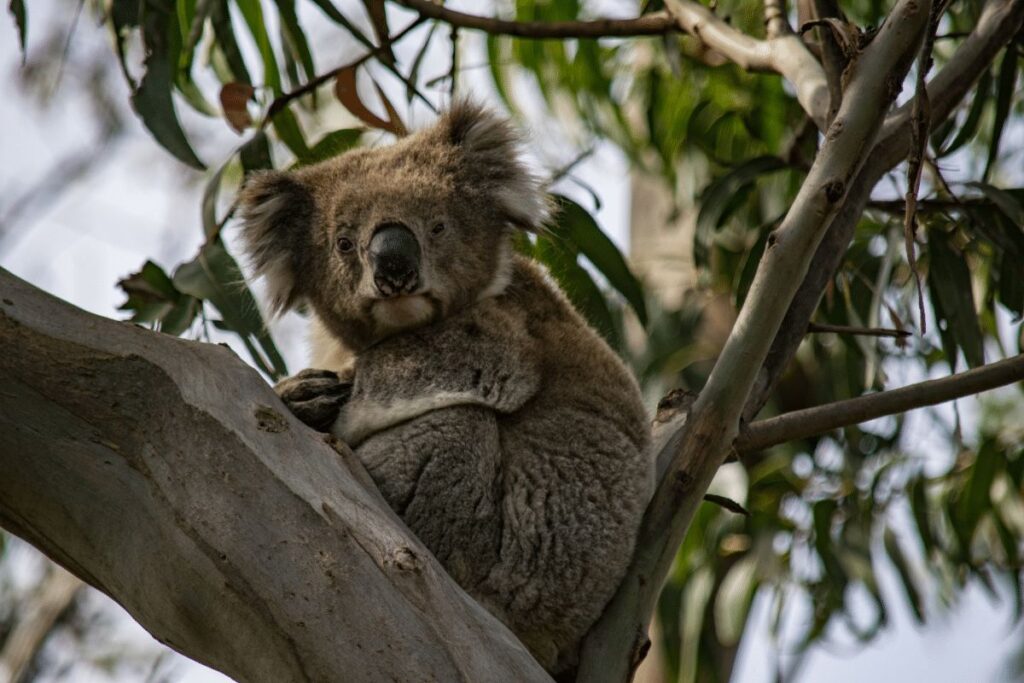
Keep an eye out for these adorable creatures as they munch on eucalyptus leaves and snooze in the tree canopies. You’ll often find them in areas with an abundance of their preferred food source, the manna gum tree.
Eastern Grey Kangaroos
These large marsupials can be spotted in the park’s open grasslands and clearings, particularly at dawn and dusk when they are most active.
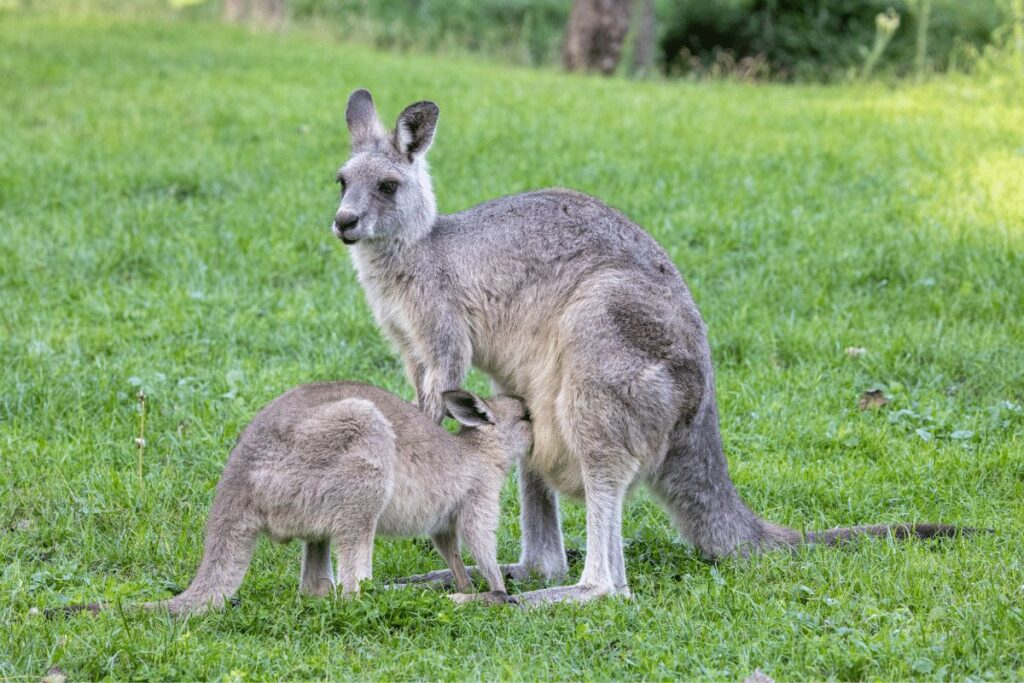
Eastern grey kangaroos are known for their impressive speed and agility, bounding through the park’s landscapes with ease.
Echidnas
These spiky monotremes can be seen foraging for ants and termites in the park’s forests and heathlands.
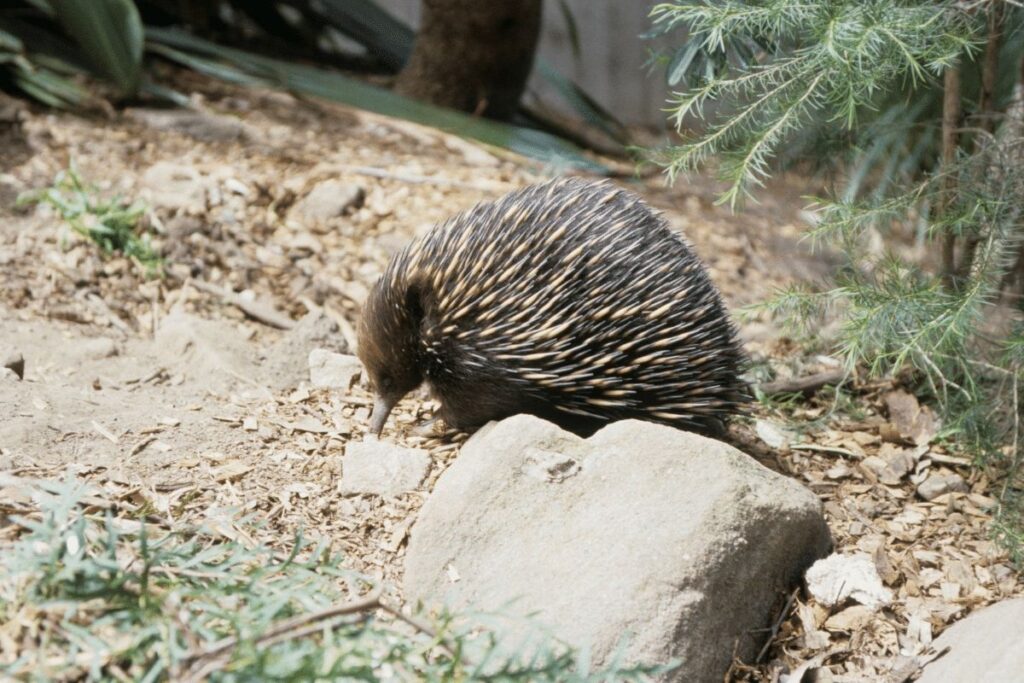
Echidnas are one of only two egg-laying mammals in the world (the other being the platypus), making them a unique sight for visitors. They are solitary animals and have a keen sense of smell, which helps them locate their favorite food sources.
Platypus
Great Otway National Park’s rivers and creeks provide an ideal habitat for the elusive platypus.
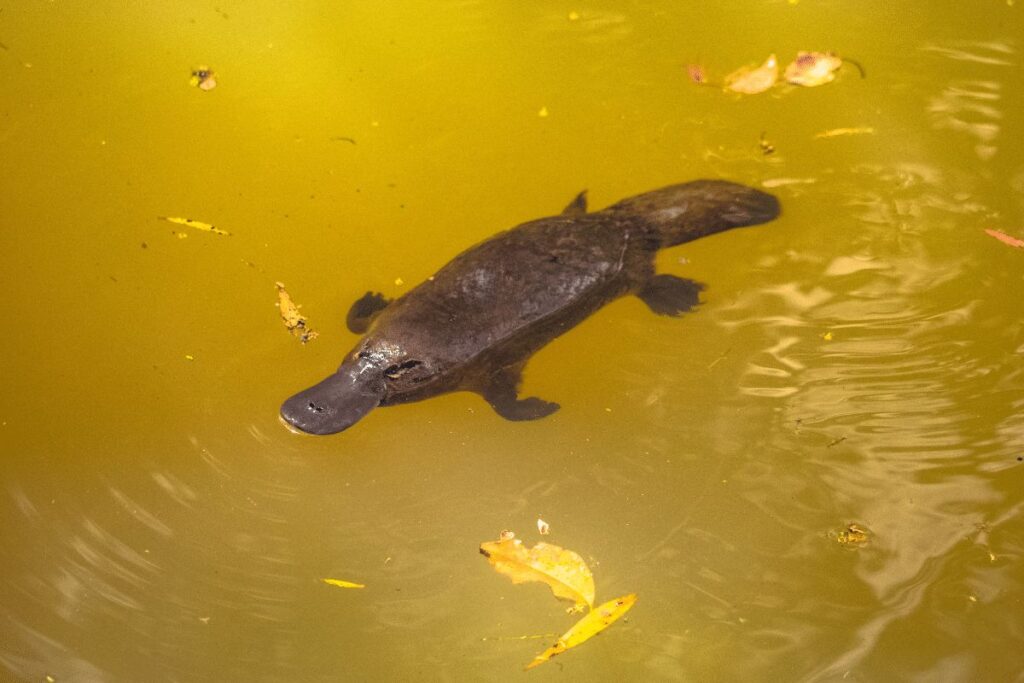
While sightings are rare, early mornings and late afternoons are the best times to spot these fascinating creatures. Look for ripples or bubbles in the water, which may indicate a platypus swimming or foraging for food.
Wombats
These sturdy, burrowing marsupials can be found in the park’s forests and grasslands.
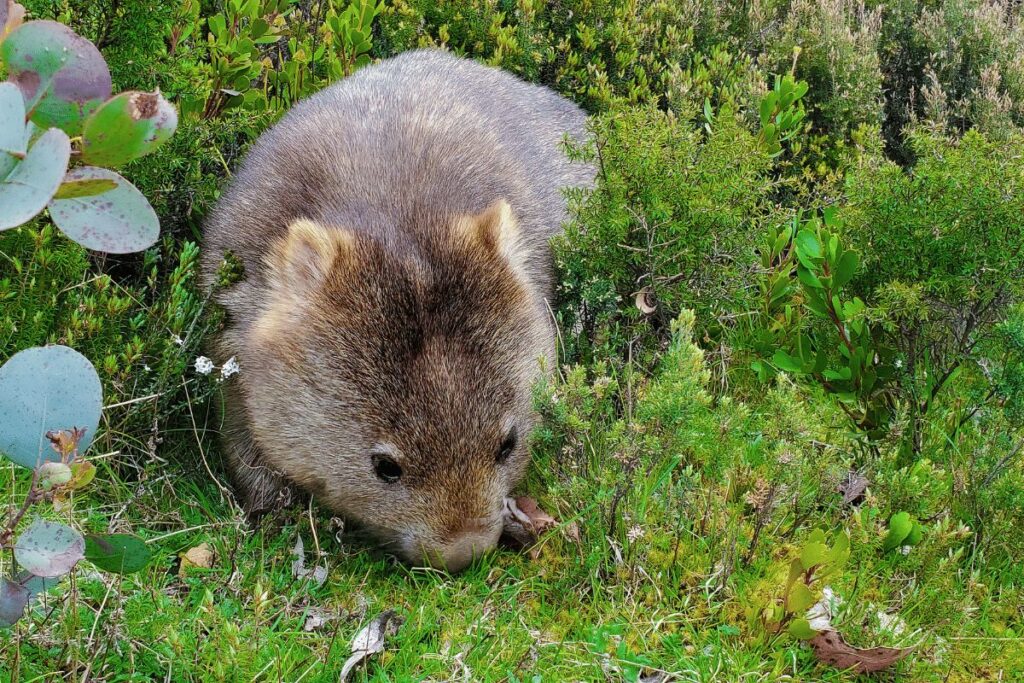
Wombats are nocturnal animals, so you’re more likely to spot them during the evening hours as they emerge from their burrows to graze on grasses and roots.
Tiger Snakes
Although encounters are rare, Great Otway National Park is home to tiger snakes, which are venomous.
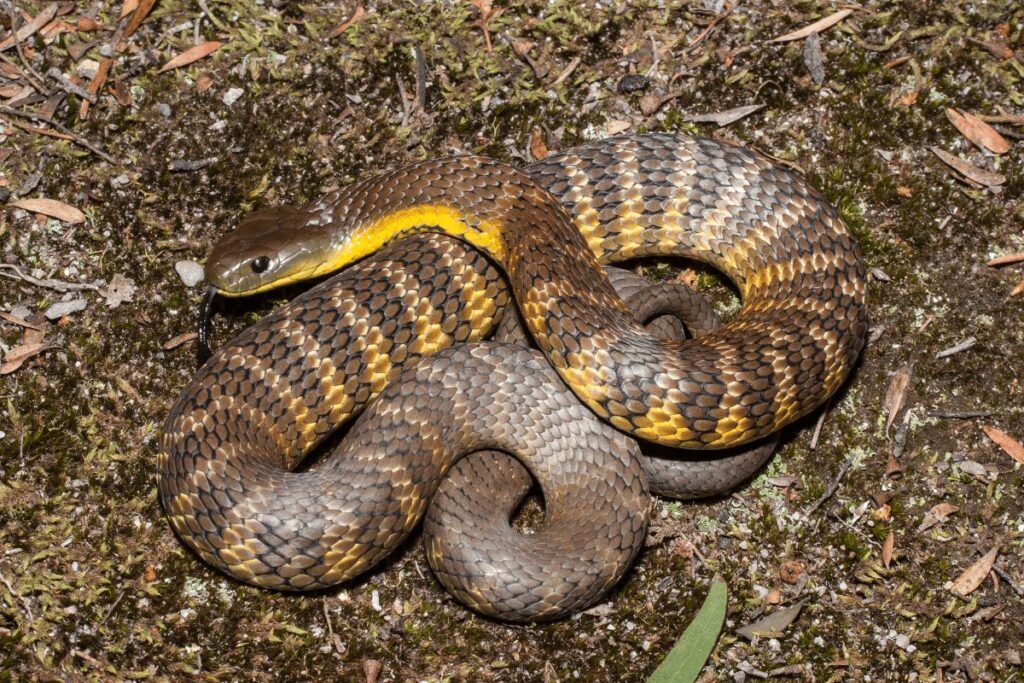
These snakes are generally shy and will avoid humans, but it’s essential to stay on designated trails and avoid disturbing them. If you come across a snake, give it space and allow it to move away.
White’s Tree Frog
This iconic Australian amphibian, also known as the Dumpy Tree Frog, can be found in the park’s wetter regions.
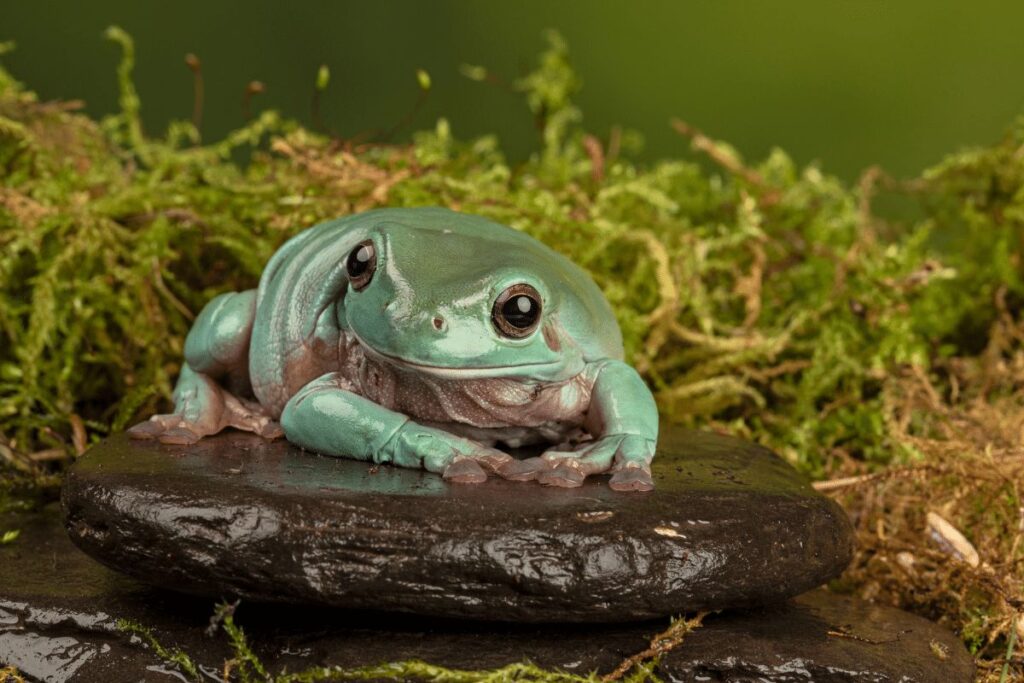
With their vibrant green coloration and large, expressive eyes, these tree frogs are a delight to spot in their natural habitat.
Ring-tailed Possums
These nocturnal marsupials can often be seen in the park’s forests and woodlands after dusk.
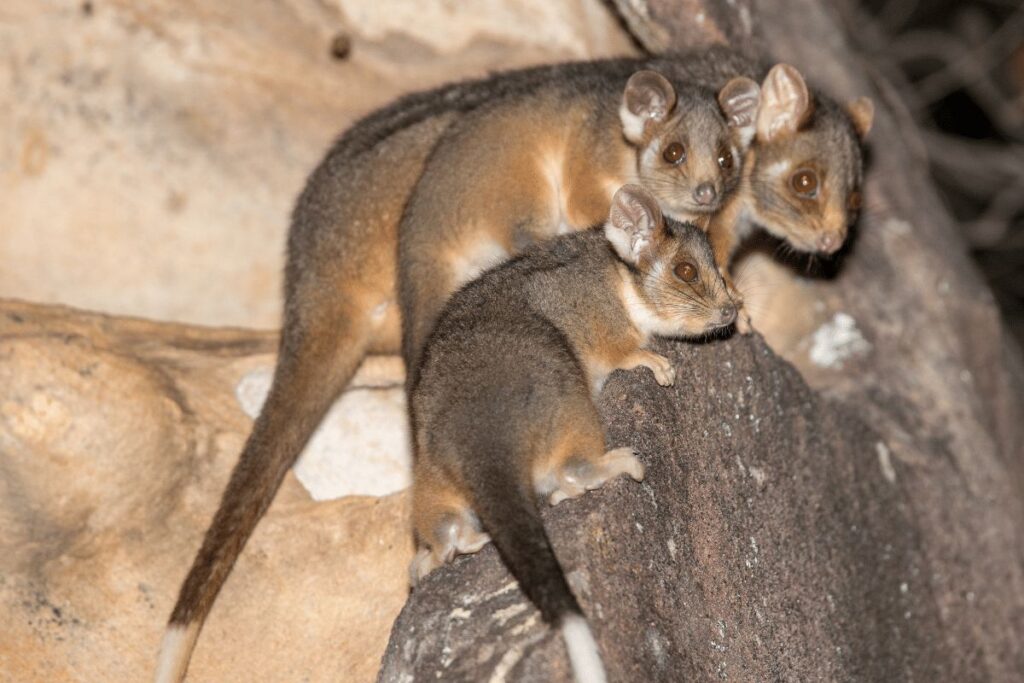
Ring-tailed possums have a distinctive, curled tail that they use for balance as they deftly navigate the tree branches. Keep an eye out for them as they forage for leaves, flowers, and fruits.
Brush-tailed Rock-wallabies
These small, agile marsupials are found in the rocky areas and cliffs of the park.
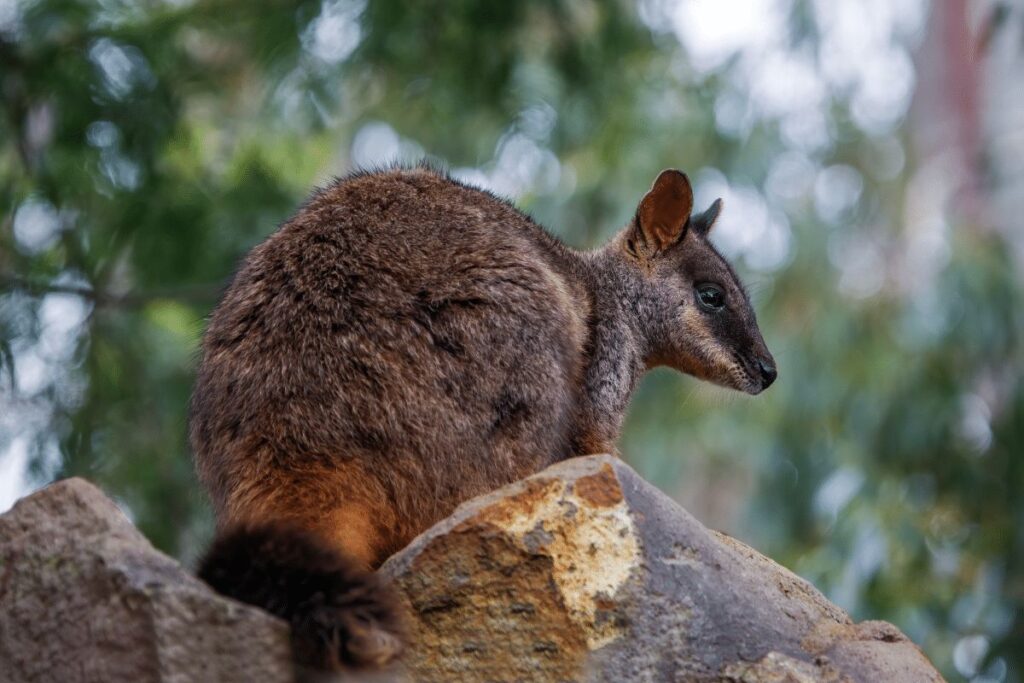
With their powerful hind legs and long tails, brush-tailed rock-wallabies are well-adapted for navigating the rugged terrain. They are mainly active at dawn and dusk, feeding on grasses and leaves.
Birdlife
The park is home to over 200 bird species, creating a symphony of calls and songs as you explore the park. Some notable species include:
Crimson Rosella
These colorful parrots are known for their bright red and blue plumage.
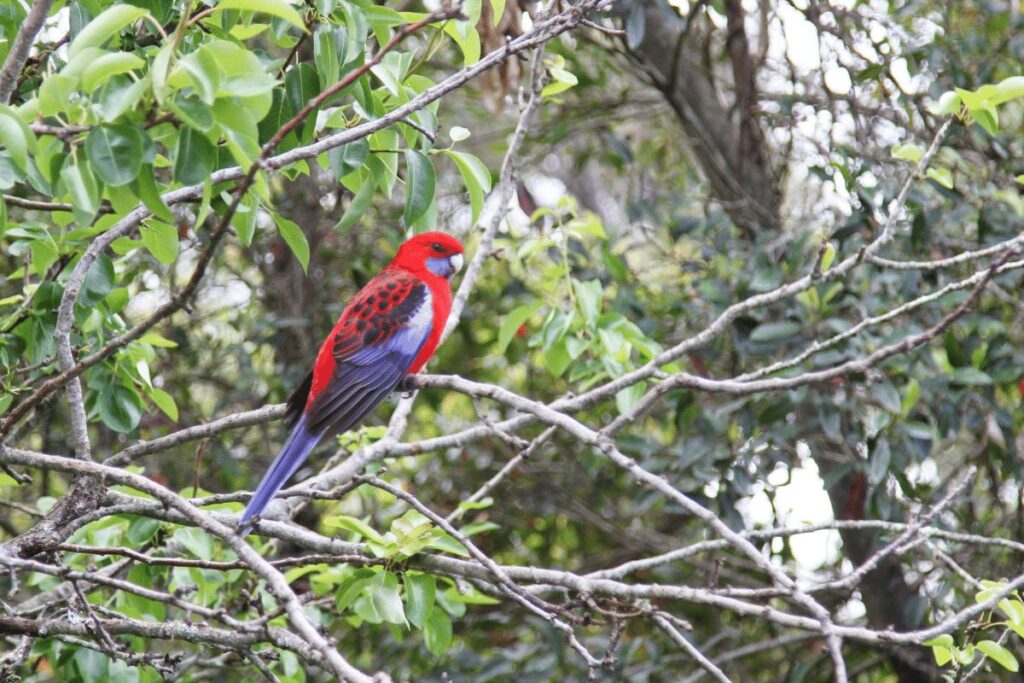
They are often seen in pairs or small groups, feeding on seeds, fruits, and flowers.
Laughing Kookaburra
Recognizable by their distinctive laughter-like call, kookaburras are a type of kingfisher found throughout the park.
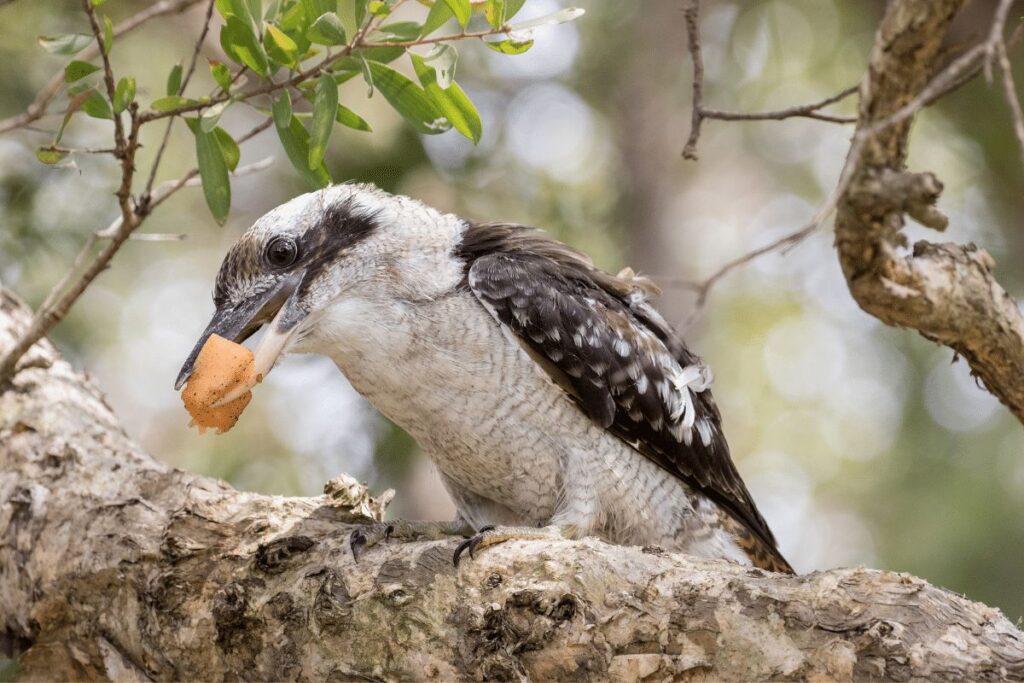
They prey on insects, small mammals, and reptiles, often perching on branches to scan for their next meal.
Yellow-tailed Black Cockatoo
These large and striking birds can be identified by their black plumage and bright yellow cheek and tail patches.
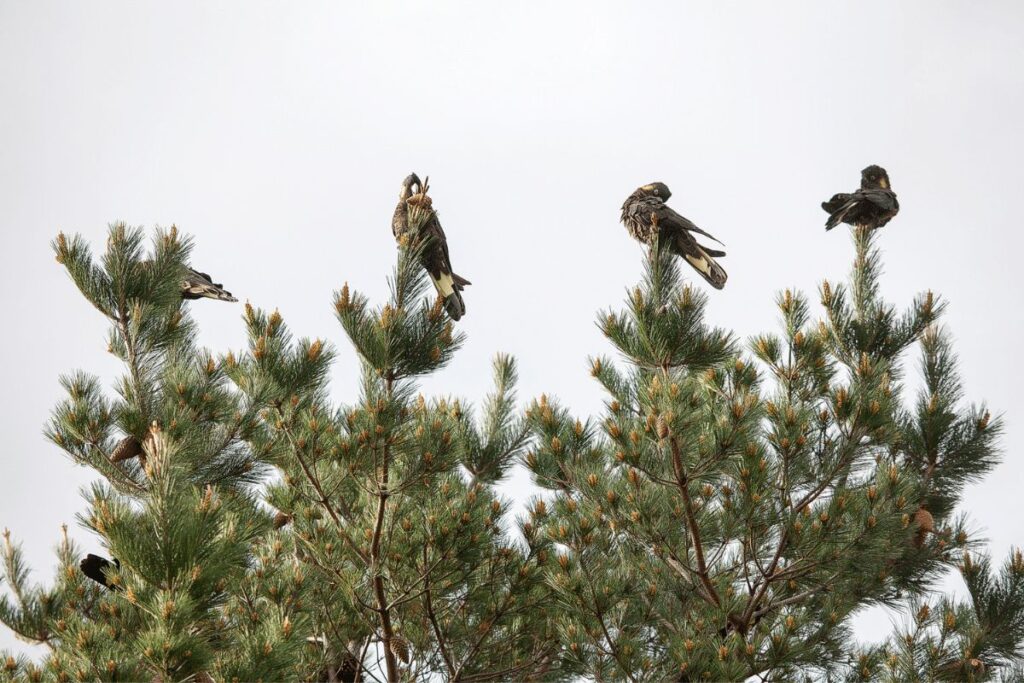
They have a raucous call and are often seen in small flocks, feeding on seeds and wood-boring grubs.
Satin Bowerbird
This fascinating bird is known for its intricate courtship behavior, which involves the male bowerbird constructing a bower from twigs and decorating it with blue objects to attract a mate.
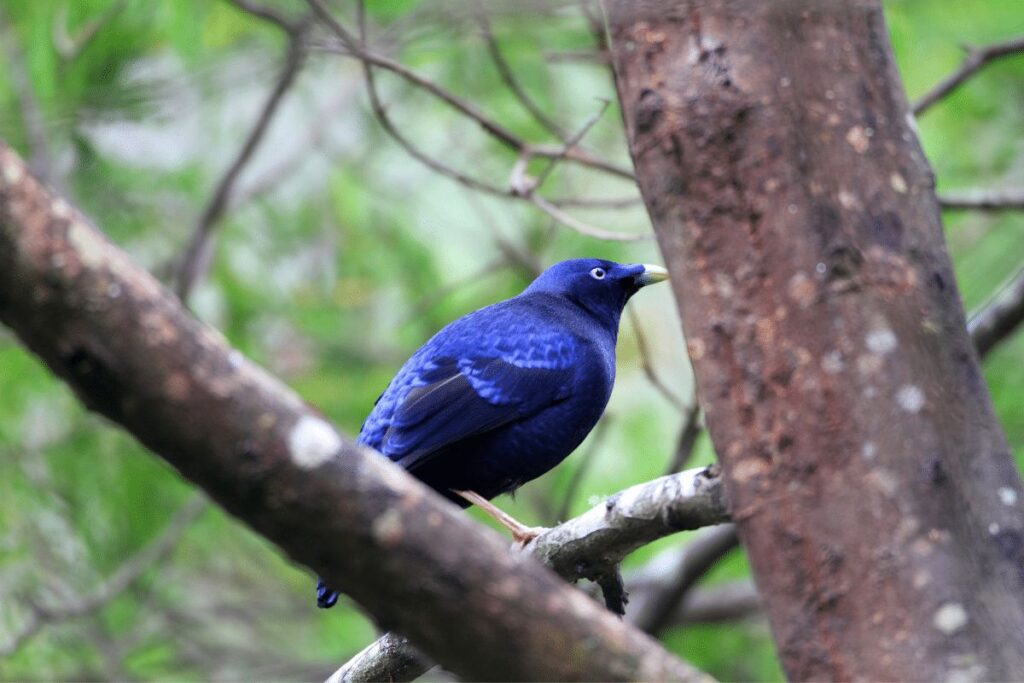
Keep an eye out for their bowers in the park’s undergrowth, and you may even be lucky enough to witness the male’s captivating display.
Superb Fairy-wren
These tiny, vibrant birds are a favorite among birdwatchers. The male superb fairy-wren sports a striking blue and black plumage during the breeding season, while the female is a more subdued brown color.
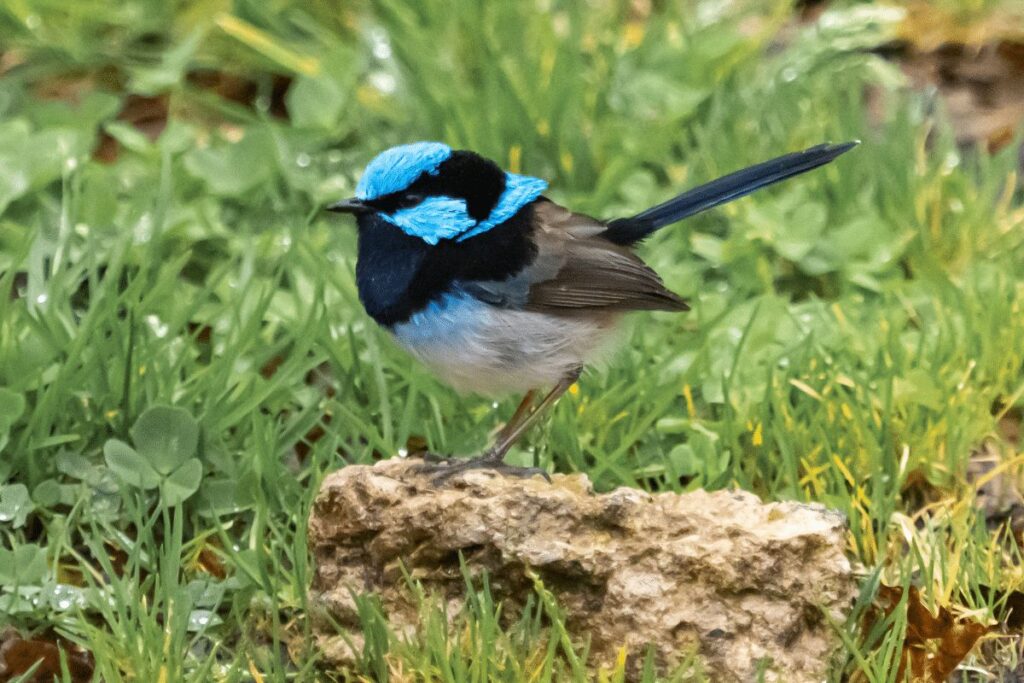
They can often be found in small groups, flitting through the park’s undergrowth and foraging for insects.
By familiarizing yourself with the various species found in Great Otway National Park, you can enhance your appreciation for the incredible biodiversity the park has to offer. Always remember to respect the park’s natural environment and its inhabitants, ensuring that future generations can continue to enjoy the unique wildlife experiences the park provides.
Unique Aspects of Great Otway National Park
The Great Otway National Park offers many unique experiences and attractions for visitors, including
Waterfalls
The park is home to numerous stunning waterfalls, such as Erskine Falls, Hopetoun Falls, and Beauchamp Falls, which are surrounded by lush vegetation and offer tranquil spots for relaxation and photography.
The Otway Fly Treetop Walk
This 600-meter-long, 25-meter-high elevated walkway provides a bird’s-eye view of the park’s ancient rainforests.
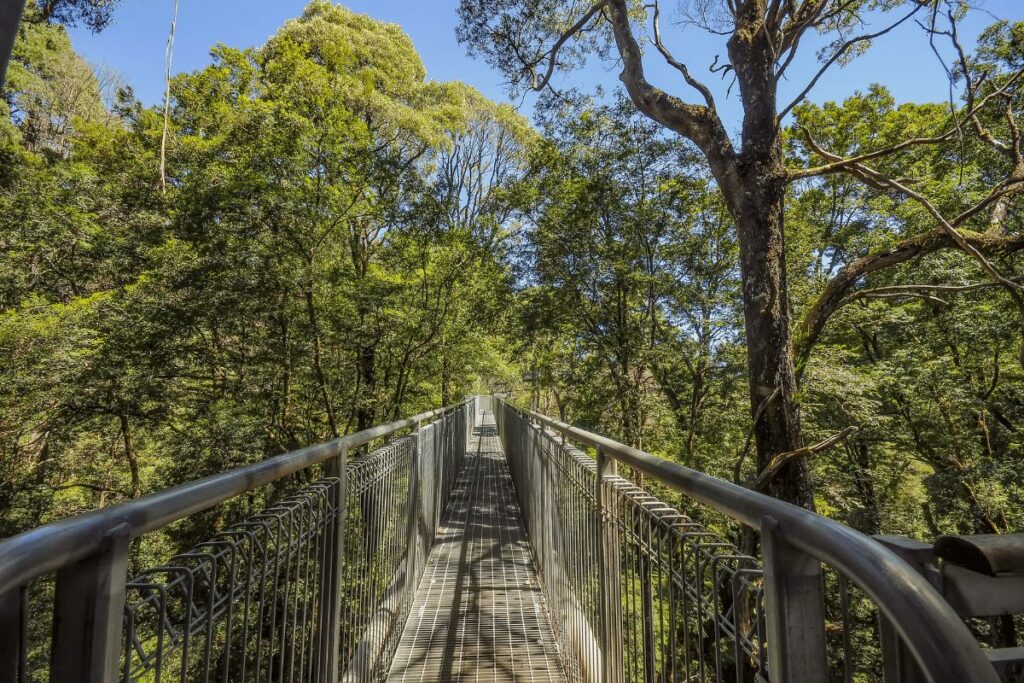
For the adventurous, there’s also the Otway Fly Zipline Tour, which takes you on an exhilarating journey through the forest canopy.
Cape Otway Lighthouse
As the oldest surviving lighthouse on mainland Australia, Cape Otway Lighthouse offers a glimpse into the region’s maritime history. Climb to the top for panoramic views of the coastline and Southern Ocean.
Melba Gully Glow Worms
One of the park’s hidden treasures, Melba Gully is home to a colony of glow worms that create a mesmerizing display after dark.
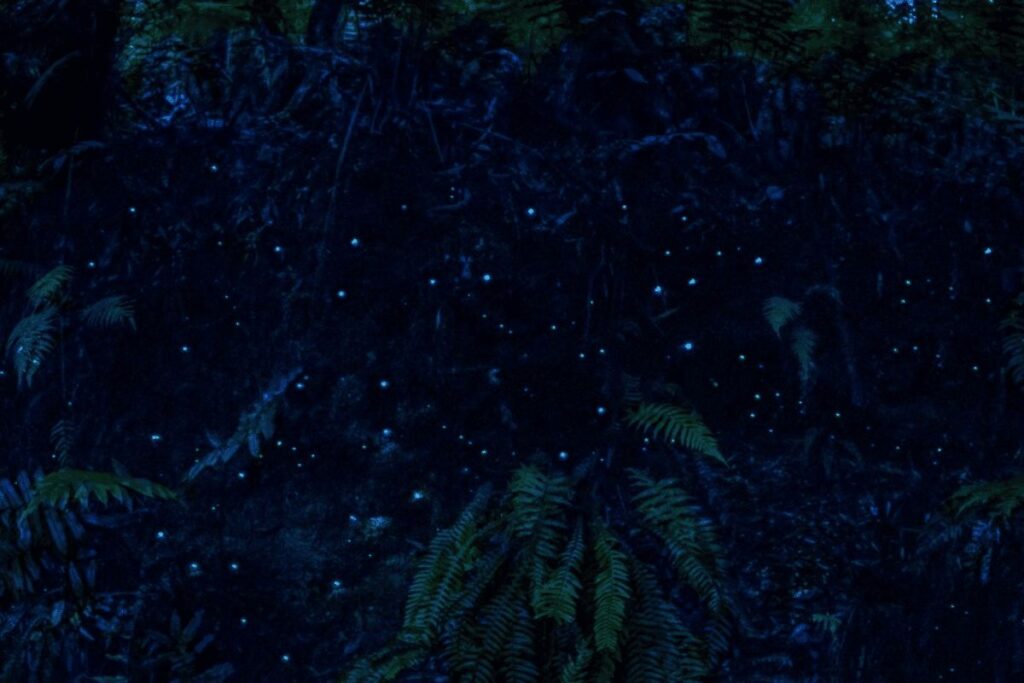
Guided night walks are available, allowing visitors to witness this magical bioluminescent spectacle while learning about the park’s nocturnal inhabitants.
The Redwoods
Tucked away in the Aire Valley, this enchanting grove of California Redwoods was planted in the 1930s and has grown to create a serene and majestic atmosphere.
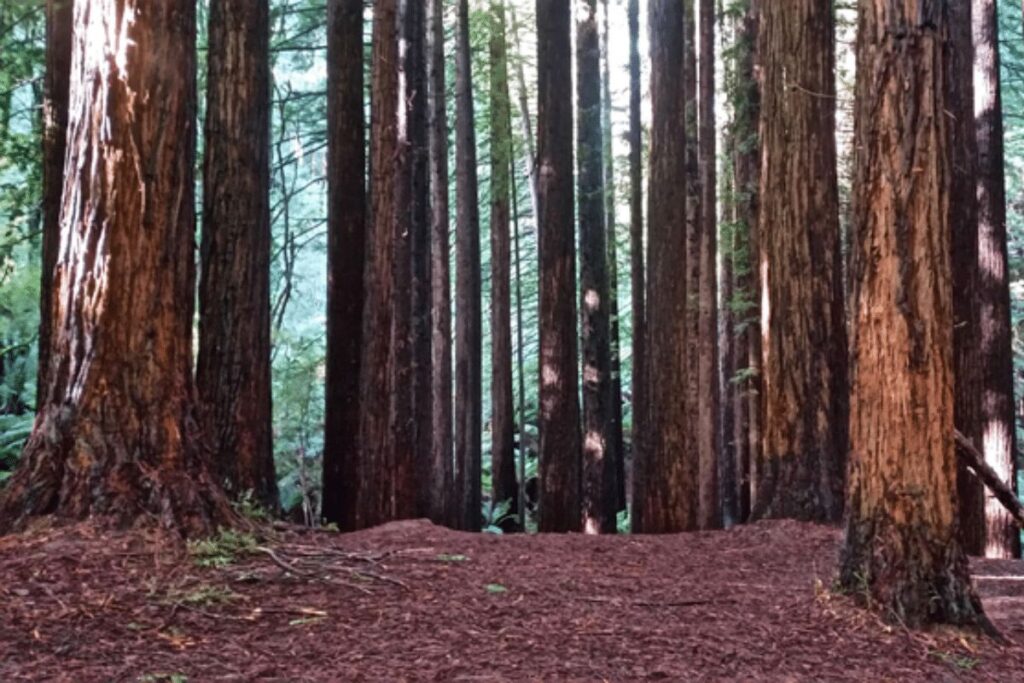
The towering trees and lush ferns make it a perfect spot for a peaceful walk or a picnic.
Lake Elizabeth
This secluded and picturesque lake, nestled within the park’s dense forests, offers a serene setting for canoeing, birdwatching, or simply enjoying the tranquility of nature. The lake was formed in 1952 following a landslide and is now home to a healthy population of platypus.
Triplet Falls
Hidden within the ancient rainforests, Triplet Falls features a series of three cascading waterfalls surrounded by lush ferns and moss-covered rocks. The well-maintained walking track offers several viewing platforms, allowing visitors to fully appreciate the beauty and power of the falls.
Apollo Bay
This charming coastal town, located along the Great Ocean Road, serves as a gateway to Great Otway National Park. With beautiful beaches, a picturesque harbor, and an array of local shops and eateries, Apollo Bay offers a relaxed and welcoming atmosphere for visitors exploring the park and its surroundings.
Great Ocean Walk
This 104-kilometer walking trail stretches from Apollo Bay to the iconic 12 Apostles, traversing diverse landscapes, including coastal cliffs, sandy beaches, and lush forests. The trail offers an immersive experience of the Great Otway National Park and the stunning coastline for which the Great Ocean Road is renowned.
Marine Life
The park’s coastal waters are home to a diverse range of marine life, including seals, dolphins, and whales. Join a boat tour or try snorkeling or scuba diving to get up close and personal with the region’s fascinating aquatic inhabitants.
Tips for Visiting Great Otway National Park
- Plan ahead: Research the park’s trails, campgrounds, and facilities to make the most of your visit. Book accommodation and campsites in advance, as they can fill up quickly, especially during peak seasons.
- Be prepared: Pack appropriate clothing and footwear for the park’s varied terrain and weather conditions. Bring plenty of water, sunscreen, insect repellent, and a first aid kit.
- Leave no trace: Help preserve the park’s pristine environment by adhering to the Leave No Trace principles. Dispose of waste properly, stay on designated trails, and respect wildlife and plant life.
- Safety: Be aware of potential hazards, such as rough terrain, unstable cliffs, and slippery rocks near waterfalls. Inform someone of your intended route and expected return time before venturing into remote areas.
- Check the weather forecast: The weather in Great Otway National Park can be unpredictable, with sudden changes in temperature and rainfall. Checking the forecast before your visit will help you plan accordingly and pack the right clothing and gear.
- Bring a camera or binoculars: With stunning landscapes, unique flora, and diverse wildlife, there are countless photo opportunities and chances to observe animals and birds up close. A camera or a pair of binoculars will enhance your experience and help you capture the park’s beauty.
- Drive carefully: The roads within the park and along the Great Ocean Road can be winding and narrow, with the potential for wildlife crossing. Stay alert, drive at a safe speed, and be prepared for changing road conditions.
- Stay on designated trails: To protect the delicate ecosystems and ensure your safety, always stay on designated trails when exploring the park. Avoid walking off-trail, as this can damage plant life and increase the risk of injury.
- Respect park regulations: Follow all park rules and regulations, such as adhering to fire restrictions, not feeding wildlife, and keeping pets on a leash (or leaving them at home, as pets are not allowed in certain areas of the park). Abiding by these rules helps protect the park’s natural resources and ensures an enjoyable experience for all visitors.
- Plan for limited connectivity: Cell phone reception can be limited or non-existent in some areas of the park. Be prepared for periods of limited connectivity by downloading maps and important information before your visit, and consider bringing a printed map or guidebook as a backup.
Great Ocean Road
The Great Ocean Road, stretching over 243 kilometers along the southeastern coast of Australia, is one of the world’s most scenic coastal drives.
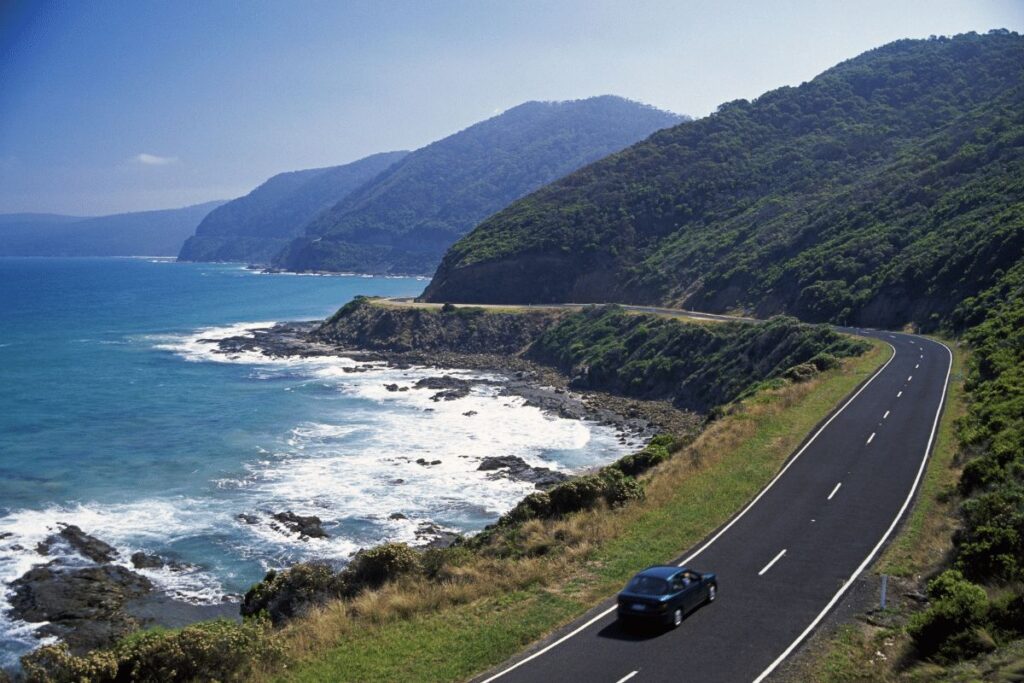
Constructed between 1919 and 1932, the road was built to commemorate the soldiers who served in World War I and to provide employment for returning servicemen.
The route passes through picturesque towns, stunning beaches, and lush rainforests, offering a wealth of attractions and activities for visitors.
Along the Great Ocean Road, you’ll find iconic sites like the 12 Apostles, Loch Ard Gorge, and London Arch, all showcasing the power of the Southern Ocean and the rugged beauty of the coastline.
You can also explore charming towns like Lorne, Apollo Bay, and Port Campbell, each offering unique dining, shopping, and accommodation options.
Great Ocean Road FAQ
What is special about Great Otway National Park?
Great Otway National Park is unique for its diverse range of landscapes, including ancient rainforests, stunning waterfalls, rugged coastlines, and pristine beaches. The park is home to a variety of plant and animal species, including some of the world’s tallest trees and iconic Australian wildlife.
What type of environment is the Great Otway National Park?
The park encompasses a range of environments, including cool temperate rainforests, eucalyptus forests, coastal heathlands, and grassy woodlands. This diversity creates a rich habitat for various plant and animal species and offers a wide array of experiences for visitors.
How old is the Great Otway National Park?
Great Otway National Park was officially established in 2004, though the area’s history and ecosystems date back thousands of years. The park’s ancient rainforests are home to some of the oldest and tallest trees in the world.
What trees are in Otway National Park?
Some of the notable tree species found in the park include the Mountain Ash, Myrtle Beech, and various tree ferns, such as the Soft Tree Fern and the Rough Tree Fern.
Why visit the Great Ocean Road?
The Great Ocean Road is renowned for its spectacular coastal scenery, diverse attractions, and picturesque towns. Visitors can enjoy stunning natural landmarks like the 12 Apostles, Loch Ard Gorge, and London Arch, as well as explore charming towns, beautiful beaches, and lush rainforests.
Why should I visit the Great Ocean Road?
Visiting the Great Ocean Road offers a memorable and diverse experience, combining breathtaking coastal views, unique natural attractions, charming towns, and ample opportunities for outdoor activities, such as hiking, surfing, and wildlife watching.
Why is it called Great Ocean Road?
The road is named after the vast and powerful Southern Ocean, which has shaped the region’s dramatic coastline and created the stunning natural landmarks found along the route.
What is the most beautiful section of the Great Ocean Road?
While beauty is subjective, many consider the stretch between Apollo Bay and the 12 Apostles to be the most picturesque. This section showcases iconic sights like the 12 Apostles, Loch Ard Gorge, and London Arch and offers dramatic coastal views, lush rainforests, and pristine beaches.
The Great Otway National Park and the Great Ocean Road offer a wealth of experiences for visitors seeking adventure, relaxation, and connection with nature. With its diverse landscapes, unique flora and fauna, and rich history, this region is a must-visit destination for travelers exploring Australia’s southern coast.
Our Recommendation: Great Ocean Road Wildlife Tour in Skenes Creek, Victoria
To truly immerse yourself in the wonders of the Great Ocean Road and Great Otway National Park, we highly recommend the 2-Day Great Ocean Road Wildlife Tour offered on Tripaneer!
This expertly guided tour offers an in-depth exploration of the region’s breathtaking landscapes, iconic landmarks, and diverse wildlife.
The tour begins with a scenic drive along the Great Ocean Road, taking in the stunning coastal views and stopping at popular attractions such as the Memorial Arch and Kennett River.
Along the way, you’ll have the opportunity to spot native wildlife like koalas, kangaroos, and various bird species in their natural habitats.
At the heart of the Great Otway National Park, you’ll visit the ancient Maits Rest Rainforest Walk, where you can marvel at the towering Mountain Ash trees and lush fern gullies.
The tour also includes a visit to the awe-inspiring 12 Apostles, Loch Ard Gorge, and London Arch, showcasing the region’s dramatic coastline and powerful ocean forces.
As the sun sets, you’ll embark on a guided dusk walk to observe the nocturnal wildlife, such as wallabies, bandicoots, and possums, as they emerge for their nightly activities.
Your overnight stay in a comfortable and cozy accommodation will ensure a restful night’s sleep before the second day of exploration.
On day two, you’ll venture inland to visit the iconic Otway Fly Treetop Walk, where you can experience the park’s ancient rainforests from a unique perspective.
The tour also includes a visit to the historic Cape Otway Lighthouse, offering panoramic views of the coastline and an insight into the region’s maritime history.
Throughout the tour, your knowledgeable guide will share fascinating stories, historical facts, and insights into the local flora and fauna, ensuring a memorable and enriching experience.
The 2-Day Great Ocean Road Wildlife Tour with Australian Natural Treasures Touring provides a comprehensive and unforgettable journey through one of Australia’s most iconic and diverse regions.
By choosing this guided tour, you can relax, knowing that your itinerary, transportation, and accommodation are expertly managed, allowing you to fully immerse yourself in the wonders of the Great Ocean Road and Great Otway National Park.
Highlights
- Encounter with eastern grey kangaroos
- Guided walks at Great Otway National Park
- A visit to The Twelve Apostles and Castle Cove
- Observe koala and native birds in the wild
- A visit to Apollo Bay and Loch Ard Gorge
- 1 two-course dinner and 1 breakfast
- 1 night’s accommodation
Book your adventure today and create memories that will last a lifetime.


